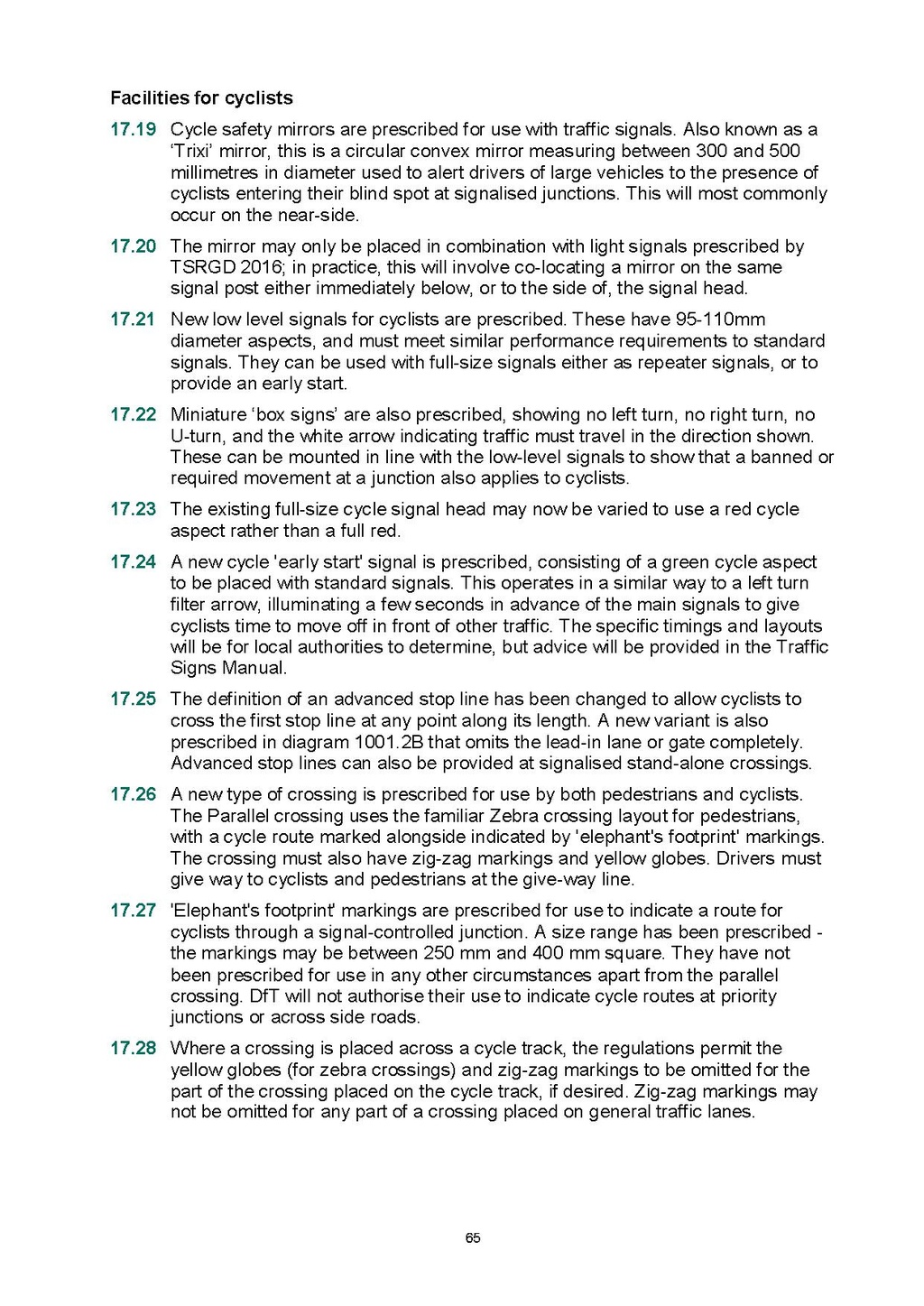Facilities for cyclists
17.19
Cycle safety mirrors are prescribed for use with traffic signals. Also known as a 'Trixi' mirror, this is a circular convex mirror measuring between 300 and 500 millimetres in diameter used to alert drivers of large vehicles to the presence of cyclists entering their blind spot at signalised junctions. This will most commonly occur on the near-side.
17.20
The mirror may only be placed in combination with light signals prescribed by TSRGD 2016; in practice, this will involve co-locating a mirror on the same signal post either immediately below, or to the side of, the signal head.
17.21
New low level signals for cyclists are prescribed. These have 95-110mm diameter aspects, and must meet similar performance requirements to standard signals. They can be used with full-size signals either as repeater signals, or to provide an early start.
17.22
Miniature 'box signs' are also prescribed, showing no left turn, no right turn, no U-turn, and the white arrow indicating traffic must travel in the direction shown. These can be mounted in line with the low-level signals to show that a banned or required movement at a junction also applies to cyclists.
17.23
The existing full-size cycle signal head may now be varied to use a red cycle aspect rather than a full red.
17.24
A new cycle 'early start' signal is prescribed, consisting of a green cycle aspect to be placed with standard signals. This operates in a similar way to a left turn filter arrow, illuminating a few seconds in advance of the main signals to give cyclists time to move off in front of other traffic. The specific timings and layouts will be for local authorities to determine, but advice will be provided in the Traffic Signs Manual.
17.25
The definition of an advanced stop line has been changed to allow cyclists to cross the first stop line at any point along its length. A new variant is also prescribed in diagram 1001.2B that omits the lead-in lane or gate completely. Advanced stop lines can also be provided at signalised stand-alone crossings.
17.26
A new type of crossing is prescribed for use by both pedestrians and cyclists. The Parallel crossing uses the familiar Zebra crossing layout for pedestrians, with a cycle route marked alongside indicated by 'elephant's footprint' markings. The crossing must also have zig-zag markings and yellow globes. Drivers must give way to cyclists and pedestrians at the give-way line.
17.27
'Elephant's footprint' markings are prescribed for use to indicate a route for cyclists through a signal-controlled junction. A size range has been prescribed the markings may be between 250 mm and 400 mm square. They have not been prescribed for use in any other circumstances apart from the parallel crossing. DfT will not authorise their use to indicate cycle routes at priority junctions or across side roads.
17.28
Where a crossing is placed across a cycle track, the regulations permit the yellow globes (for zebra crossings) and zig-zag markings to be omitted for the part of the crossing placed on the cycle track, if desired. Zig-zag markings may not be omitted for any part of a crossing placed on general traffic lanes.
65
